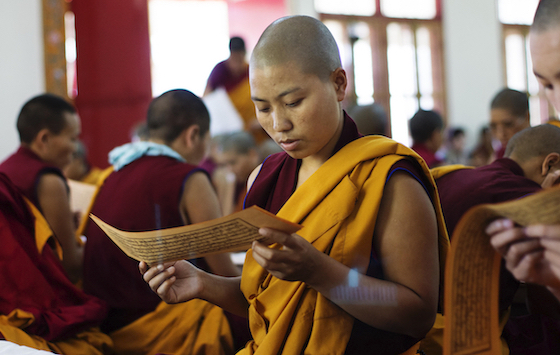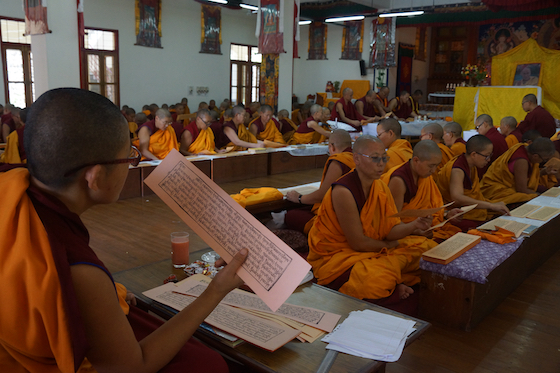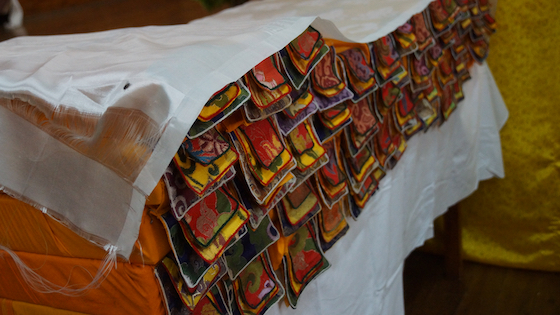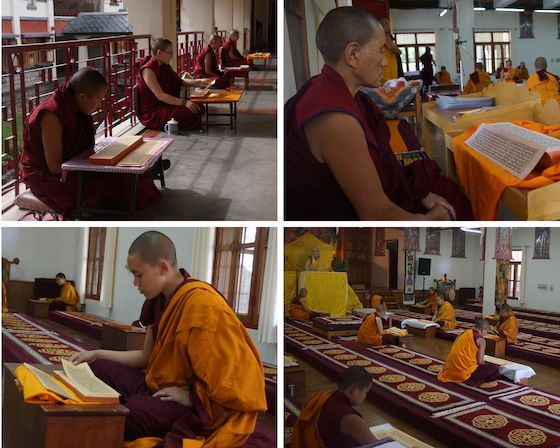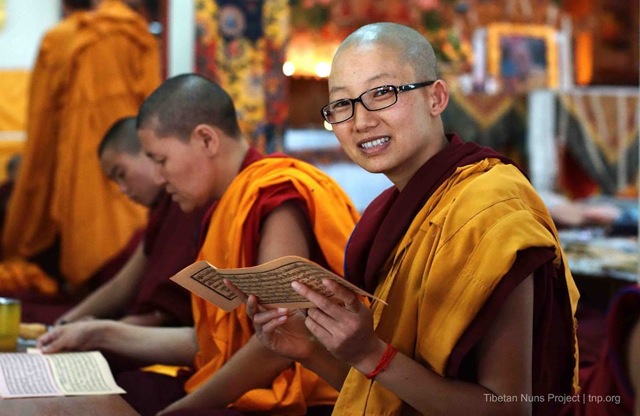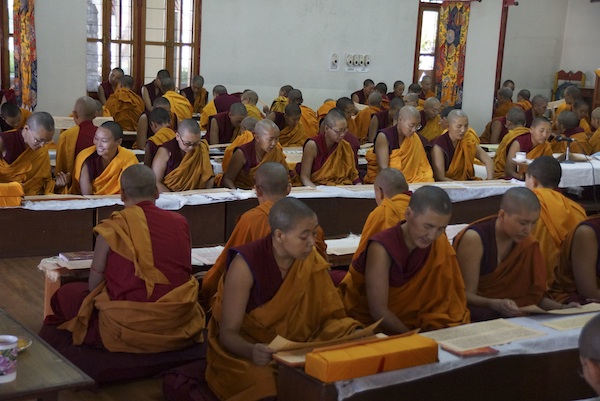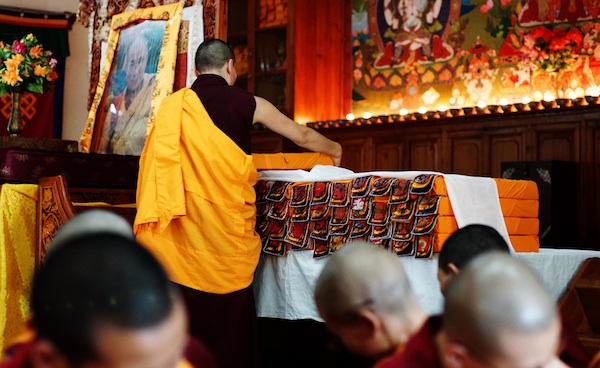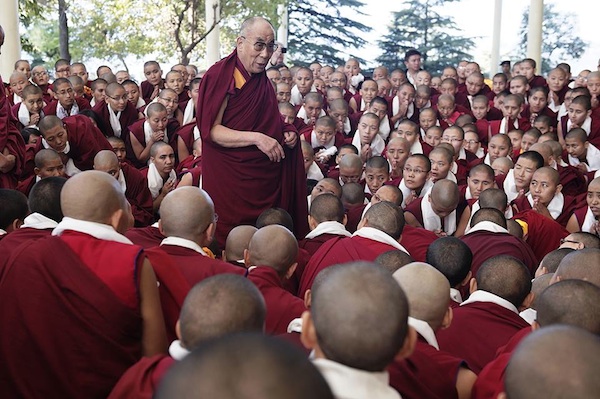Mudras are sacred hand gestures or positions that used to evoke a state of mind. The Sanskrit word “mudra” means “seal”, “mark”, or “gesture”. In Tibetan the word is ཕྱག་རྒྱ་ or “chakgya”. Each of these sacred hand gestures has a specific meaning. Many of them symbolize major moments or events in the Buddha’s life.
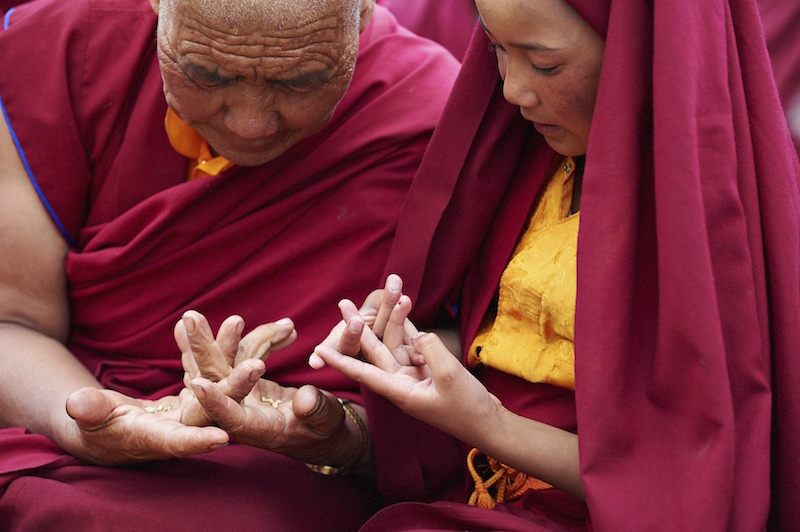
In this beautiful photo by Olivier Adam, an elderly nun in Zanskar shows a novice nun how to make the Mandala Offering Mudra.
8 Mudras and their Meaning
Sacred hand gestures or mudras are often depicted in Buddhist art. In this blog we’d like to share descriptions and images of some common mudras. The list here is not exhaustive.
The Earth Witness Mudra
When Siddhartha Gautama, the historical Buddha, was meditating under the Bodhi tree, he was assailed by the demon Mara, who tried to disturb his mind. Mara represents the passions that trap and delude us. Siddhartha refused to be tempted from the path to enlightenment and he called on the earth to witness his worthiness to become enlightened, saying, “The earth shall be my witness, I will not let myself be seduced.” In the Earth Witness Mudra, (also known as the Bhumisparsa Mudra or Gesture of Witness), the historical Buddha is seated in the meditation posture and touches the earth with the fingertips of his right hand, palm facing inwards. The left hand is placed in the lap with the palm facing upwards.
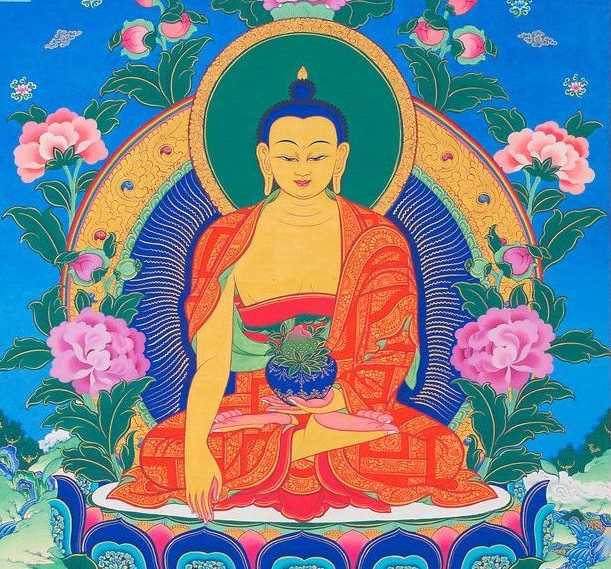
In this detail from a thangka print, the historical Buddha is depicted seated in meditation and calling the earth as his witness.
The Mudra of Meditation
The Mudra of Meditation (dhyana) is made by placing both hands on the lap, right hand on the left, with the palms facing upwards, the tips of the thumbs touching, and the fingers fully stretched. This mudra helps to calm the mind for meditation and is used for deep contemplation and reflection. The mudra of meditation is a characteristic gesture of the Buddha Shakyamuni.
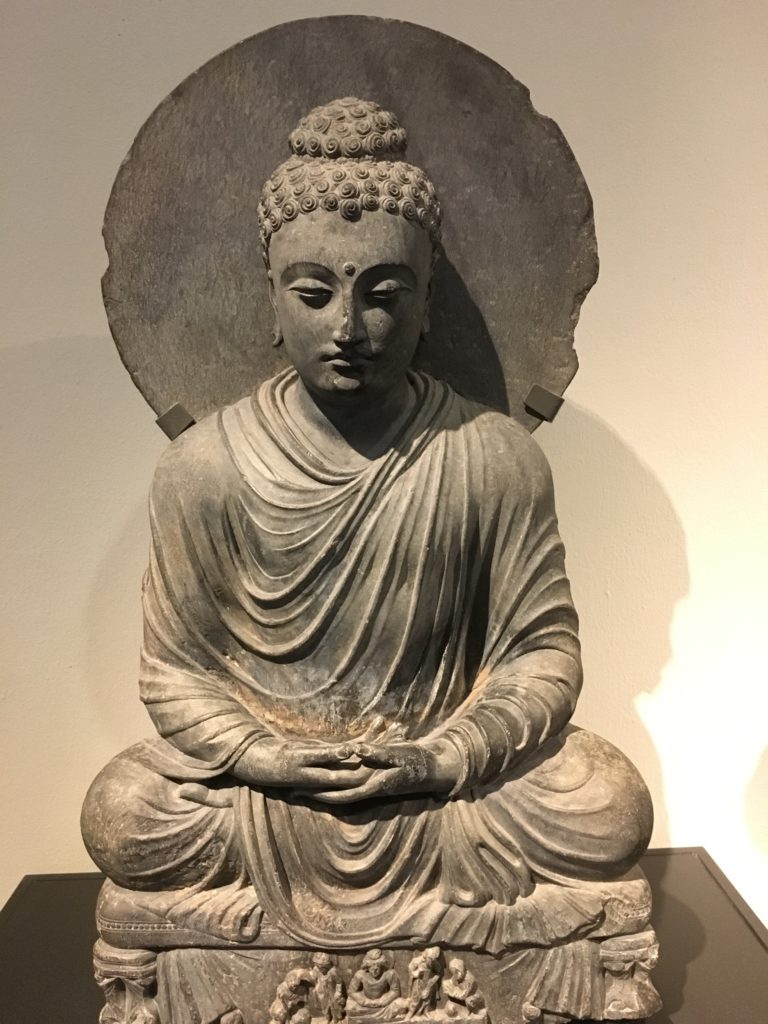
This ancient stone sculpture shows the Buddha with his hands in the Mudra of Meditation
The Namaskara or Anjali Mudra
This mudra, while not found in representations of the Buddha or other deities, is commonly used by nuns, monks, and lay people to symbolize devotion, prayer, and admiration. Called the Namaskara Mudra or the Anjali Mudra, it is used as a common form of greeting in most Asian countries. Anjali is a Sanskrit word which means “salutation” or “to offer” and Namaskar is Hindi for “good day”. To make this mudra, you bring your palms together in front of your heart space, fingers pointing upwards, and thumbs close to the chest, to symbolize honor, respect, and devotion.
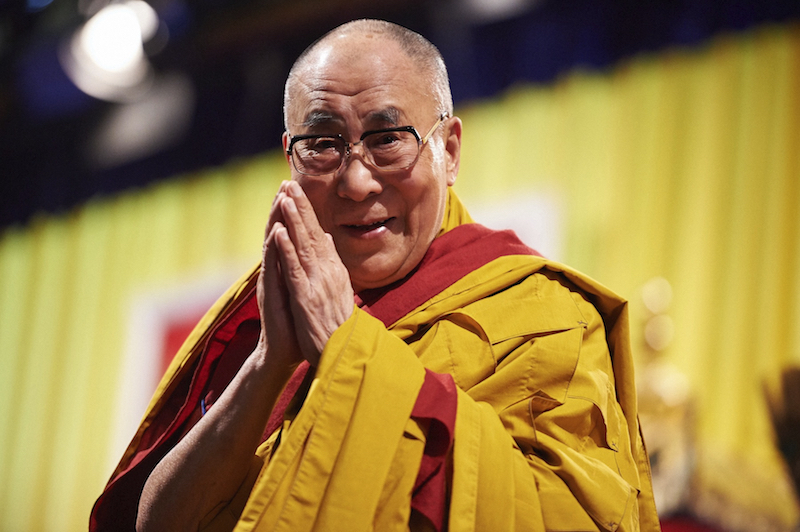
His Holiness the Dalai Lama holds his hands together in greeting and in offering respect to others. Photo courtesy of Olivier Adam.
Mudra of Holding the Jewel or Manidhara Mudra
The Mudra of Holding the Jewel looks very similar to the Namaskara Mudra or the Anjali Mudra shown above. Also called the Manidhara Mudra, it is made by holding one’s hands together in front but with the palms and fingers slightly arched, holding the precious, wish-fulfilling jewel. This jewel or gem is also depicted in Tibetan prayer flags, carried upon the back of the Lung Ta or wind horse. This sacred hand gesture of holding the jewel is a mudra of Avalokiteshvara, a bodhisattva who embodies the compassion of all Buddhas. The Tibetan word for Avalokiteshvara is Chenrezig (སྤྱན་རས་གཟིགས་). The Dalai Lamas are believed to be manifestations of Chenrezig,
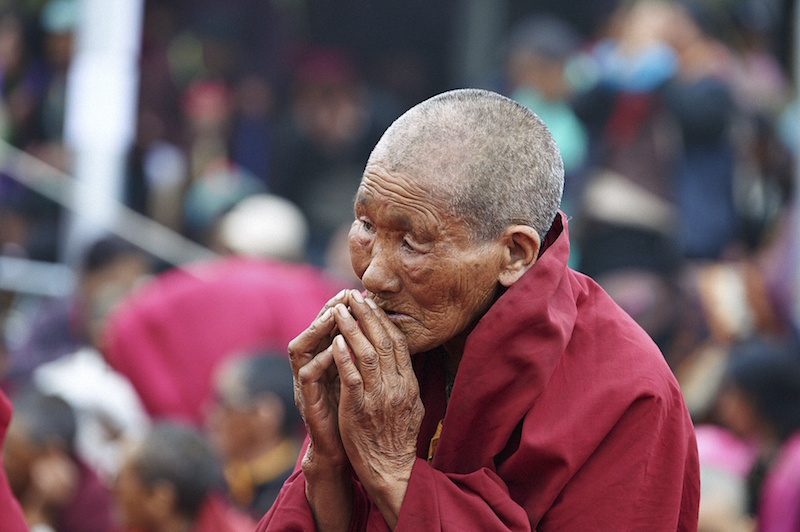
An elderly nun in Zanskar places her palms together in devotion, holding the wish-fulfilling jewel, a mudra associated with Avalokiteshvara (Tibetan: Chenrezig). Photo courtesy of Olivier Adam.
The Mandala Offering Mudra
The Mandala Offering Mudra is a complex and sacred hand gesture that acts as a symbolic offering of the entire universe for the benefit of all sentient beings. Performing the Mandala Offering Mudra helps to reduce one’s attachment and to purify the clinging mind. Although this mudra is usually made together with prayers and Buddhist chants, non-Buddhists can also perform it to receive its spiritual benefits.
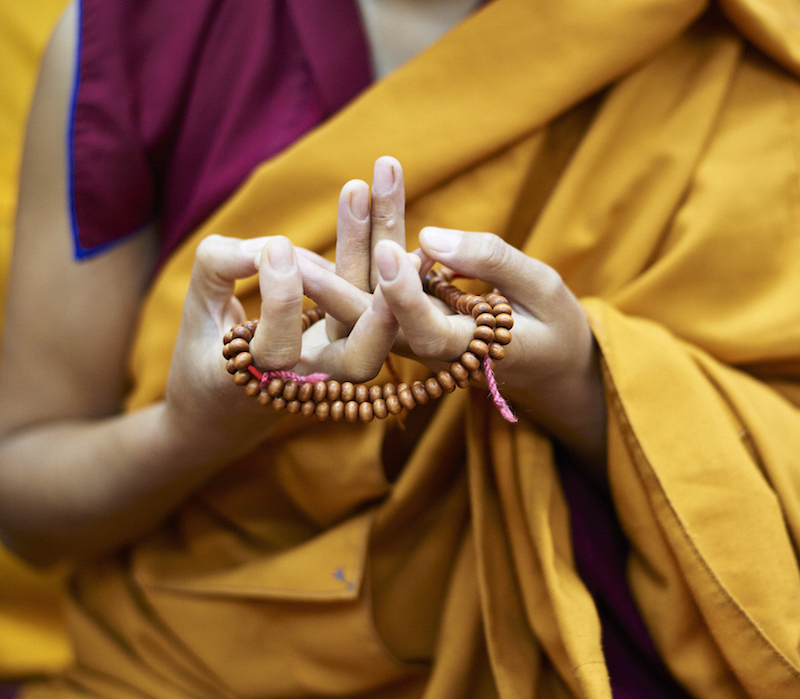
A Tibetan Buddhist nun performs the Mandala Mudra with her mala (Buddhist prayer beads). Photo courtesy of Olivier Adam.
To make this complex mudra, sit in meditation pose with your back straight. Calm your breathing and visualize offering the mandala – the universe – to the Buddha, bodhisattvas, and all holy beings, giving with great joy and with purity of heart. Place your hands palms up and intertwine your fingers. With the tips of your thumbs, press down on the tips of the opposite little finger. Then, with the bent tips of your index fingers, press down on the tip of the opposite middle finger. Finally, take your ring fingers, unclasp them, and put them back to back, pressing the backs together and with both fingers going straight up through the center. Together the ring fingers symbolize Mt. Meru, the sacred mountain, and the four continents described in Buddhist cosmology.
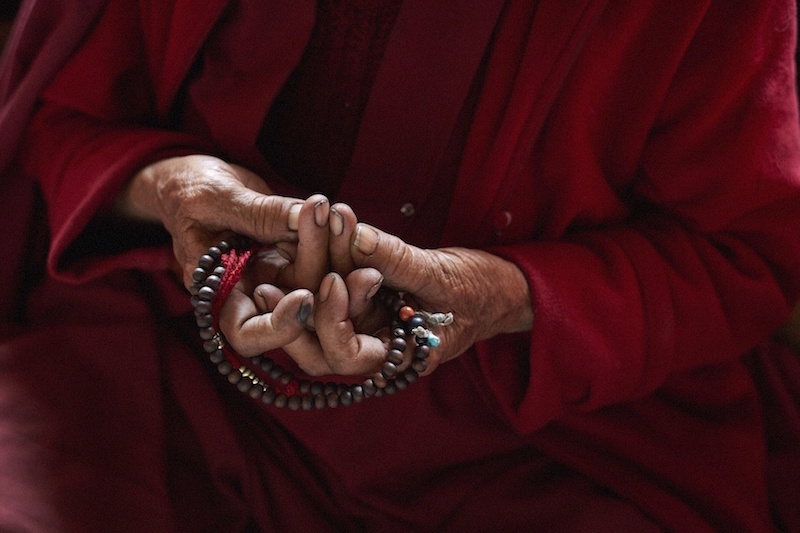
A Tibetan Buddhist nun in Zanskar performs the mandala offering mudra. Photo courtesy of Olivier Adam.
Vitarka Mudra or Teaching Mudra
The Vitarka Mudra (the Mudra of Teaching or Discussion) is a common mudra representing the discussion and transmission of Buddhist teachings. It is formed by joining the tips of the thumb and index finger together to form a circle, keeping the other three fingers pointing straight up. The circle formed by the joined fingers symbolizes perfection with no beginning or end.
This mudra is usually made with one hand, most often the right one, with the hand held upward close to the chest and the palm facing outward. However, the mudra may also be made with both hands held in front of the chest, with each index finger and thumb joined in a circle. When two hands are used, the left palm faces inward and the right palm is turned outward. The Teaching Mudra represents the Buddha’s first teaching after becoming enlightened. It also symbolizes the “Turning of the Wheel of the Dharma” or Dharmachakra. There are a great number of variations of this mudra in Mahayana Buddhism. In Tibetan Buddhism, it is the mystic gesture of Taras and bodhisattvas.
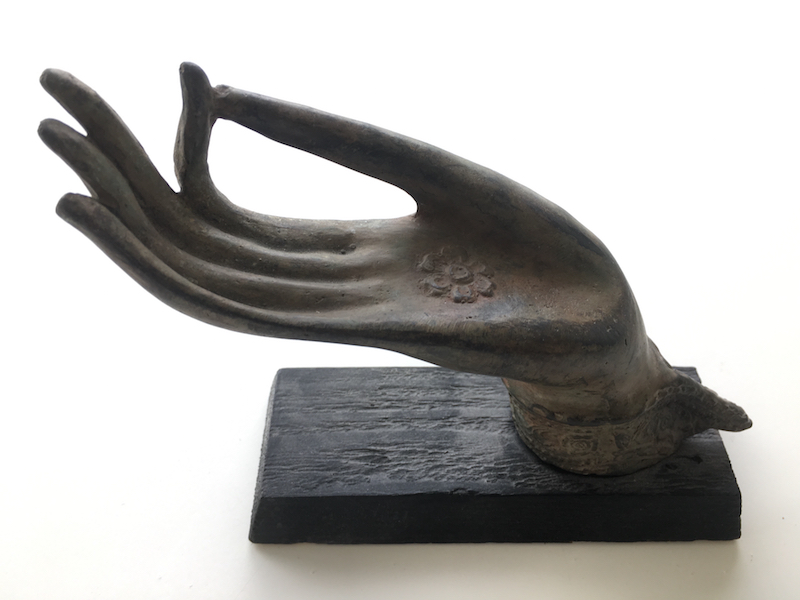
This sculpture shows the mudra of teaching or the Vitarka Mudra, with the tips of the thumb and index finger joined to form a circle.
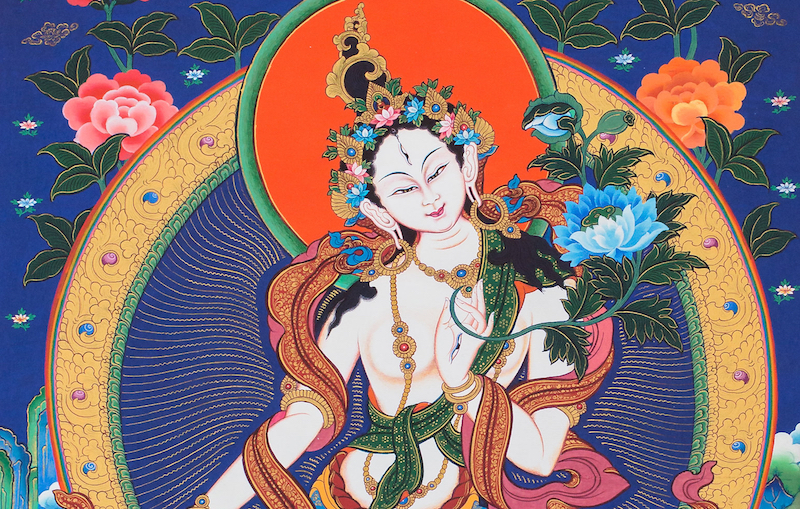
In this detail from a thangka print, White Tara is holding an utpala flower in her raised left hand. The tips of her thumb and fourth or ring finger are touching. This is a gesture of good fortune and shows that, by relying upon her, one may accomplish complete purity of mind and body.
Generosity Mudra or Varada Mudra
The Varada Mudra is the gesture of generosity, charity, and compassion. It is commonly found in representations of the Green and White Tara. This sacred hand gesture represents the granting of blessings, wishes, or even pardon. It also symbolizes the “gift of truth” – the precious gift of the dharma or Buddhist teachings. In the Varada Mudra, the palm faces out and hangs down, usually touching the right leg. This mudra is often used in conjunction with another mudra. The five fingers represent the five perfections: generosity, morality, patience, diligence, and meditation.
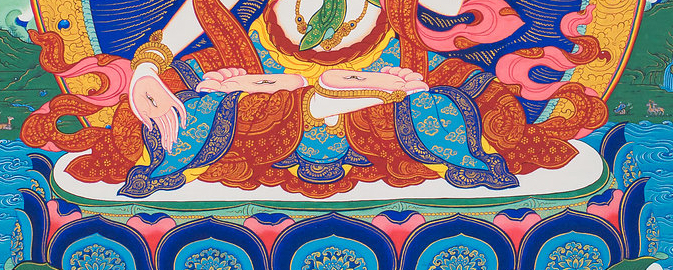
Detail of a thangka print depicting White Tara and showing the outward facing palm and downward hand of the Varada Mudra or Mudra of Generosity.
Mudra of Fearlessness or Abhaya Mudra
Abhaya in Sanskrit means fearlessness. The Mudra of Fearlessness or the Abhaya Mudra symbolizes the dispelling of fear. It can look to Westerners like the common hand gesture for “stop”. The mudra is made by raising the right hand to shoulder height, with the arm bent and the palm facing outward. This mudra is more commonly depicted in standing images.
This very ancient hand gesture is also a sign of peace and friendship. Placing one’s hand up and open in this way indicates that one is free of weapons and comes in peace. In Buddhism, the mudra shows the fearlessness and therefore the spiritual power of the Buddha or bodhisattva who makes it.
It is said that the historical Buddha made this sacred hand gesture immediately after gaining enlightenment. At a later time, the Buddha was about to be attacked by a mad elephant. The poor animal had been fed alcohol and tortured by one who hoped to use the elephant as a weapon against the Buddha. The elephant, enraged and in pain, charged at the Buddha and his followers. While others ran away, the Buddha stood calmly, raising his hand in the gesture of fearlessness. He felt great love and compassion for the stricken elephant. In response, the elephant stopped in its charge, became calm, and then approached the Buddha and bowed its head.
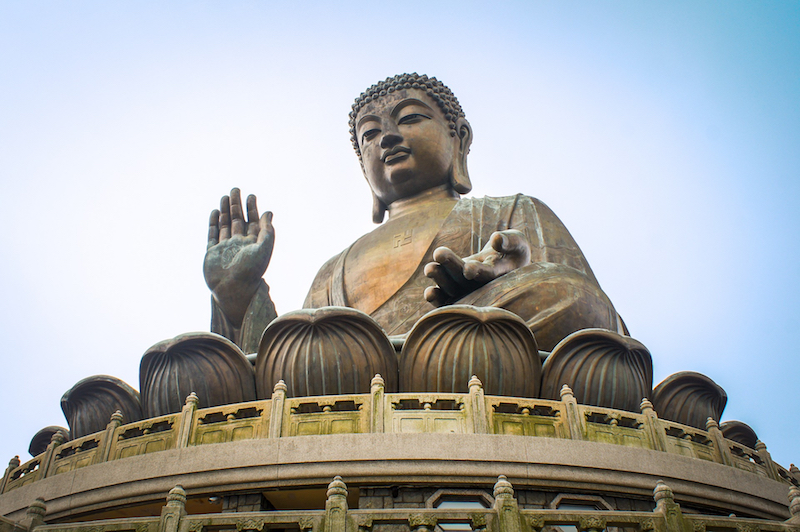
A giant Buddha statue in Hong Kong shows the seated Buddha with the mudra of fearlessness or the Abhaya Mudra
A note about the images of mudras: The thangka prints shown in this blog post were donated to the Tibetan Nuns Project by a generous donor. A range of thangka prints are available through our online store, with all proceeds from sales going to help the nuns. We are very grateful to Olivier Adam for sharing his beautiful photos. Many of his photos are available as cards through our online store. Prints of Olivier Adam’s photographs are available through his Etsy shop, Daughters of Buddha.
